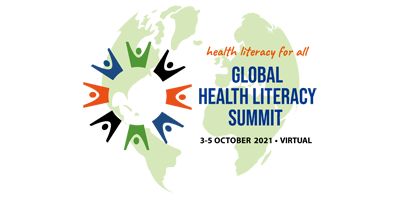Abstract Preview
Abstract
|
Title Graffiti and health literacy in the COVID-19 crisis in Greece and Europe |
|
Type Oral Presentation Only |
|
Theme Global Health Literacy Summit 2021 |
|
Topic Health literacy and public health promotion |
Authors
|
Main Author Barbara K. Kondilis1 2 |
|
Presenting Author Barbara K. Kondilis1 2 Kalliopi Koundouri1 5 |
|
Co-Author Kalliopi Koundouri1 5 Anastasios Kountouris1 5 Vasiliki Ivrou4 Eleni Plemmenou1 Alexandra Kourakou3 |
Authors' Institution
|
Department / Institution / Country Arts and Sciences / Hellenic American University / Greece (Ελλάδα)1 Health Psychology / ICPS Humanistic Studies / Greece (Ελλάδα)2 Psychology / National and Kapodistrian University / Greece (Ελλάδα)3 Media and Communication / National and Kapodistrian University / Greece (Ελλάδα)4 Education / University of the Aegean / Greece (Ελλάδα)5 |
|
Abstract Content (abstracts should be written in Size 11 font, Arial font style) Background Graffiti, in all its forms, is a global phenomenon transcending society as a reference point, particularly in times of crisis, positively or negatively. Viewed as a globalized “urban art” form (Brazenall, 2015; Miller, 2015; Zavakos, n.d.), indicative of local and global linguistic landscapes (Ghouma, 2016), or acts of vandalism with legal ramifications, while ‘tagging graffiti’ as expressing group identities (Noels, Yashihma, Yang, 2012). Several studies emphasize sociological phenomena of vandalism and related crime, including the “Broken Windows Theory,” still others, graffiti as value to communities. These phenomena, emphasizing personal and civic engagement, lend capacity for policy reform encapsulating health literacy, since graffiti and street art relate to local and global culture. Health literacy in Greece and the EU has been a topic of research for over ten years, while public space graffiti and its potential to increase health literacy is a relatively unexplored global phenomenon. Methods Mixed methods study: (a) a thematic analysis and purposive sampling of images collected locally (Athens) and internationally from related posts and articles on graffiti art used for coronavirus or COVID-19 (time period March-May 2020); (b) extracts from interviews with local graffiti writers/taggers (age range 16 – 35) for insight into related COVID-19 graffiti activities. Qualitative data from inter-methodological analyses of selected graffiti images, and the aforementioned interviews are utilized. Results Select images focused on the ‘Stay Home’ social marketing campaign, healthcare worker safety, domestic issues, individual designs or political statements. Five in-depth tagger interviews offered insight into their personality traits, community hierarchy, referencing specific graffiti works including the ‘stay home’ campaign for COVID-19. Discussion & Conclusion The authors suggest that the COVID-19 crisis, peaking in Winter-Spring of 2020, inspired several graffiti artists to “lend a public health hand” in supporting front-line workers by creating public space images and/or combining action words or phrases with popular cultural images. Several themes enhanced the ‘stay home’ movement by focusing on public safety, including focus on domestic violence, while others addressed related political issues. These graffiti works contribute to health literacy, aesthetically and semiotically, inspiring actions and expressing individual and community perceptions about the crises at hand. |
Requires Audio or Video system for Presentation?: Yes
